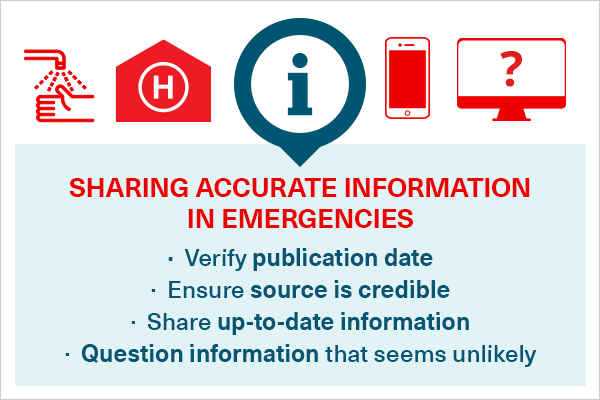
In emergencies, it’s normal for people to seek out as much information as they can find. Knowledge is power. Having information enables people to have some control over a situation. For example, it allows people to take steps to protect themselves and their family, to understand the risks and to establish a plan.
Yet in those early days of any emergency, there can be a shortage of reliable information available while experts try to evaluate the situation, assess the risk to the public, and inform officials and the public about the best course of action to reduce the impact of the emergency. This is where misinformation and rumours start to circulate to fill that gap.
The impact of misinformation
Misinformation can have a negative impact on those people involved in responding to the emergency. It can also have economic impacts, societal impacts and public health impacts. There are very real dangers in relying on information that isn’t vetted or hasn’t come from a reliable source.
We’ve seen the impact in the response to Ebola outbreaks where misinformation can have deadly consequences, as our Red Cross worker described in this account on the frontlines of the ongoing fight to stop the outbreak in the Democratic Republic of Congo.
Finding credible information
It’s incredibly important to seek out the latest updates from credible sources. In public health emergencies, we encourage people to follow the advice and updates from public health authorities, whether at the local level, or the Public Health Agency of Canada and the World Health Organization. The information these organizations provides is evidence-based and includes the most up-to-date information available.
During floods or wildfires, local and provincial governments, emergency officials and agencies, utilities and the Red Cross all share up-to-date information through social media and online.
Individual accounts of what’s happening on the ground, often accompanied by dramatic videos or images, as compelling as they may be, don’t tell the full story.
It’s also important to look at when information was shared and where it originated. Old news stories and social media posts tend to resurface and recirculate, but the information may be outdated or not even relevant.
Before an emergency strikes, we can take steps such as following trusted channels of information on social media, signing up for alerts, downloading the Weather Network App to ensure we receive warnings and are prepared for any emergency situation.
How to stop the spread of misinformation
We all have a role to play to stop the spread of misinformation. One step we can all take is to only share information we know is accurate. We can also ask questions and look critically at information, where it comes from and why it’s being shared. This is not a new phenomenon and has only been amplified by the popularity of social networks.

